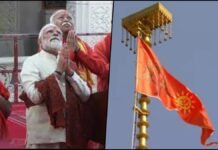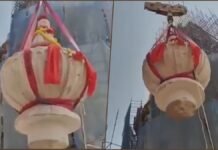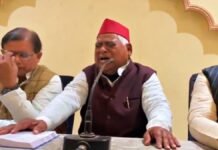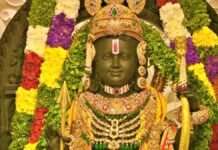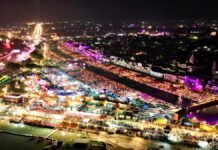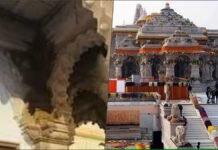
Key Points:
- First anniversary of the consecration of Ram Lalla celebrated in Ayodhya’s grand Ram temple.
- 500-year-long dispute over Ram Janmabhoomi resolved with a Supreme Court decision in 2019.
- Legal battles, historical movements, and archaeological findings played pivotal roles in the journey.
- Construction of the temple commenced in 2020; consecration held on January 22, 2024.
New Delhi: Today, January 11, marks the first anniversary of the consecration of Ram Lalla in the majestic Ram temple of Ayodhya. The entire nation, including Ramnagari, is immersed in a celebratory spirit. This momentous occasion is a testament to the remarkable journey from a 500-year-old dispute to the realization of a grand Ram temple in Ayodhya. Here’s the complete story of how this historic transformation unfolded.
The Origins of the Dispute: From 1526 to 1858
The story begins in 1526, when Mughal ruler Babur arrived in India. Two years later, Babur’s governor Mir Baqi built a mosque at the site believed to be Lord Ram’s birthplace. This mosque, named Babri Masjid, became the center of a long-standing controversy.
From 1528 to 1853, during the Mughal and Nawab rule, the dispute remained dormant. However, with the decline of Mughal power and the rise of British rule in the 19th century, Hindus began asserting their claim, alleging that the mosque was constructed after demolishing a temple. The legal fight began in 1858 with the first FIR filed against performing havan and puja within the mosque premises. Wire fencing was later installed to allow separate worship areas for Hindus and Muslims.
Legal and Political Milestones: 1885 to 1992
In 1885, Raghubar Das of Nirmohi Akhara filed a civil suit seeking ownership of the Ram Janmabhoomi. While Hindus were allowed to worship, construction of a permanent temple was denied. By 1949, idols of Ram Lalla appeared under the mosque’s central dome, intensifying demands for a temple. The legal battle escalated post-independence, with cases filed by the Hindu Mahasabha and Nirmohi Akhara in the 1950s and 60s. Simultaneously, the Sunni Waqf Board filed a counterclaim asserting Muslim ownership.
The 1980s witnessed a surge in the Ram Janmabhoomi movement. The Vishwa Hindu Parishad (VHP) launched a campaign in 1982, leading to the 1986 court decision to unlock the disputed structure. In 1989, Prime Minister Rajiv Gandhi’s government permitted the laying of the temple’s foundation stone.
However, the most defining moment came on December 6, 1992, when the Babri Masjid was demolished by kar sevaks, triggering nationwide communal violence and marking a turning point in the dispute.
Resolving the Dispute: 2002 to 2019
In 2002, the Allahabad High Court initiated hearings to determine ownership. The Archaeological Survey of India’s 2003 excavation report revealed the existence of a Hindu religious structure beneath the mosque site. On September 30, 2010, the High Court divided the disputed land equally among Shri Ram Lalla Virajman, Nirmohi Akhara, and the Sunni Waqf Board.
The final breakthrough came in 2019 when the Supreme Court concluded daily hearings and delivered its landmark judgment on November 9. The court awarded the entire 2.77-acre site to Ram Lalla and directed the government to provide alternative land to Muslims for a mosque. A trust was formed for temple construction.
Construction and Consecration: 2020 to 2024
The Ram Janmabhoomi Teerth Kshetra Trust was established in February 2020 to oversee the temple’s construction. Prime Minister Narendra Modi laid the foundation stone on August 5, 2020. On January 22, 2024, the consecration of Lord Ram was celebrated in the completed first phase of the temple. The temple was opened to the public on January 23, 2024.
The journey from a contentious dispute to the consecration of Ram Lalla in a grand temple signifies a moment of unity and reverence for millions. Today’s celebrations not only honor the resolution of a historical conflict but also reaffirm faith and devotion across the nation.
































